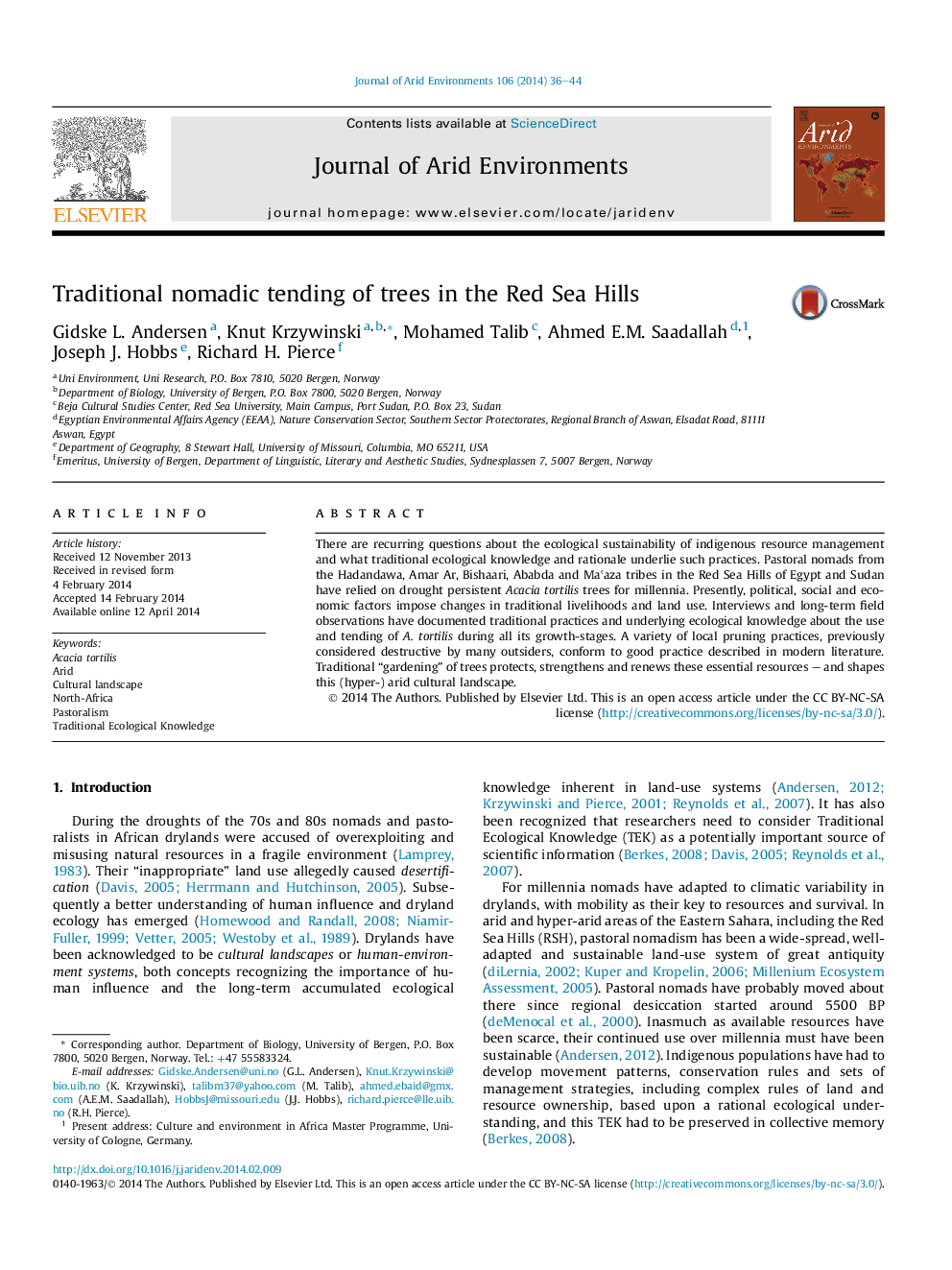| Article ID | Journal | Published Year | Pages | File Type |
|---|---|---|---|---|
| 6303490 | Journal of Arid Environments | 2014 | 9 Pages |
Abstract
There are recurring questions about the ecological sustainability of indigenous resource management and what traditional ecological knowledge and rationale underlie such practices. Pastoral nomads from the Hadandawa, Amar Ar, Bishaari, Ababda and MaËaza tribes in the Red Sea Hills of Egypt and Sudan have relied on drought persistent Acacia tortilis trees for millennia. Presently, political, social and economic factors impose changes in traditional livelihoods and land use. Interviews and long-term field observations have documented traditional practices and underlying ecological knowledge about the use and tending of A. tortilis during all its growth-stages. A variety of local pruning practices, previously considered destructive by many outsiders, conform to good practice described in modern literature. Traditional “gardening” of trees protects, strengthens and renews these essential resources - and shapes this (hyper-) arid cultural landscape.
Keywords
Related Topics
Physical Sciences and Engineering
Earth and Planetary Sciences
Earth-Surface Processes
Authors
Gidske L. Andersen, Knut Krzywinski, Mohamed Talib, Ahmed E.M. Saadallah, Joseph J. Hobbs, Richard H. Pierce,
